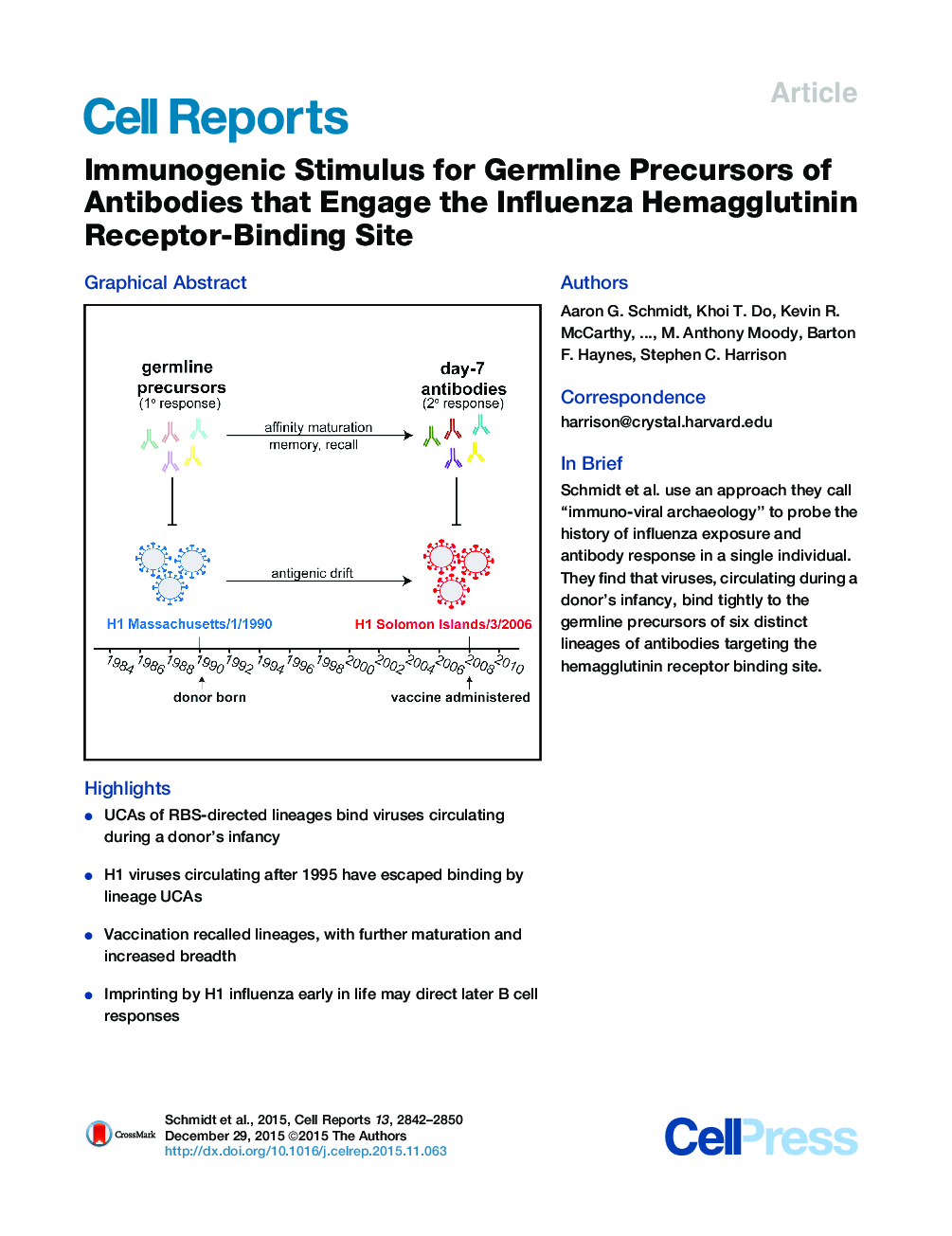| Article ID | Journal | Published Year | Pages | File Type |
|---|---|---|---|---|
| 2041766 | Cell Reports | 2015 | 9 Pages |
•UCAs of RBS-directed lineages bind viruses circulating during a donor’s infancy•H1 viruses circulating after 1995 have escaped binding by lineage UCAs•Vaccination recalled lineages, with further maturation and increased breadth•Imprinting by H1 influenza early in life may direct later B cell responses
SummaryInfluenza-virus antigenicity evolves to escape host immune protection. Antibody lineages within individuals evolve in turn to increase affinity and hence potency. Strategies for a “universal” influenza vaccine to elicit lineages that escape this evolutionary arms race and protect against seasonal variation and novel, pandemic viruses will require directing B cell ontogeny to focus the humoral response on conserved epitopes on the viral hemagglutinin (HA). The unmutated common ancestors (UCAs) of six distinct, broadly neutralizing antibody lineages from one individual bind the HA of a virus circulating at the time the participant was born. HAs of viruses circulating more than 5 years later no longer bind the UCAs, but mature antibodies in the lineages bind strains from the entire 18-year lifetime of the participant. The analysis shows how immunological memory shaped the response to subsequent influenza exposures and suggests that early imprinting by a suitable influenza antigen may enhance likelihood of later breadth.
Graphical AbstractFigure optionsDownload full-size imageDownload as PowerPoint slide
